Long Island
The Strauss family immigrants settled in New York and most on Long Island in Nassau and Suffolk counties. So, let's look at what life was like on Long Island in these early years.
Great Blizzard of 1888
Joseph, Katherine, and Michael were in New York for about one year when the Great Blizzard of 1888 struck. The photo below shows a scene from New York City but conditions were similar on Long Island, where the Strauss families settled.
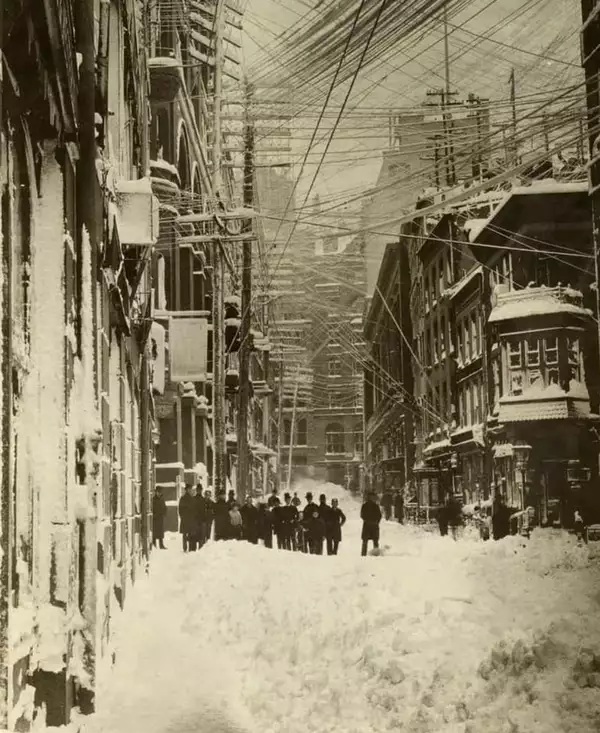
The blizard was not limited to Long Island. Here's a photo of Poughkeepsie, New York in the Hudson Valley. Eventually, Strauss family members settled in the Hudson Valley.
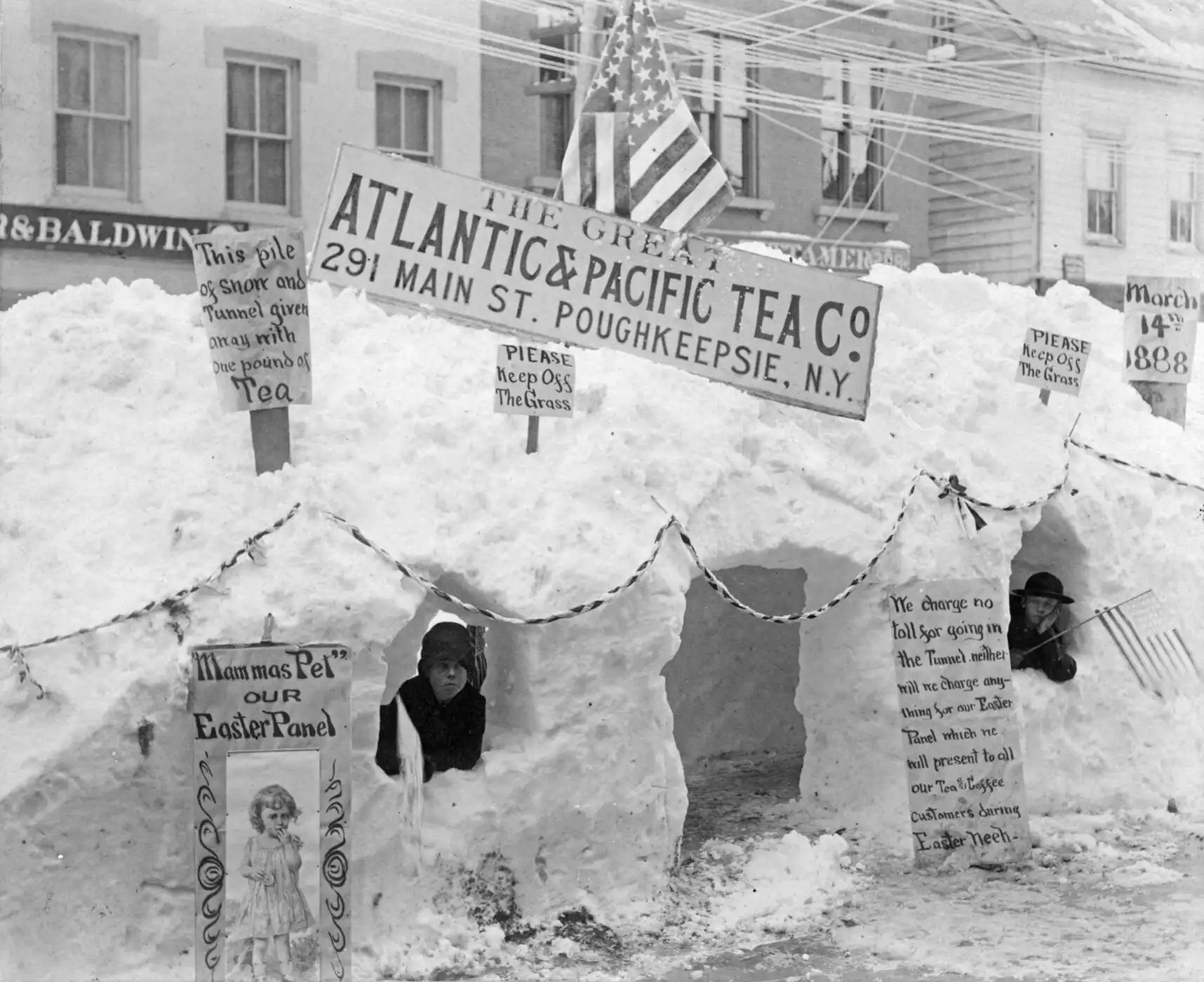
Electrification and telephone
In the above photo, notice the wires above the streets. Some carried electricity and others were for telephone. Electricity was introduced to New York City in 1882 and telephones at about the same time. In 1879, Thomas Edison built the first commercial electric power station in Manhattan that provided power for 85 customers. By the end of the 1880s, electric lighting had become common in homes, businesses, and public spaces.
Electrification on Long Island occurred more slowly. By the mid-1880s, several Long Island communities, including Babylon and Northport, had established their own electric lighting companies, but the number of customers was small. It took years to get the infrastructure in place.
The first telephone exchange in New York City was established in 1878 by the American Bell Telephone Company, but telephone service was used only by businesses at first. By the end of the 1800s, there were thousands of subscribers.
Telephone systems on Long Island in the 1800s were more limited. The first telephone exchange on Long Island was established in 1881 in the village of Patchogue and had a small number of subscribers. Additional exchanges were slowly established in other Long Island communities. These exchanges were acquired by the Suffolk Telephone Company and the Nassau Telephone Company. In turn, they were acquired by the New York Telephone Company, a subsidiary of American Telephone and Telegraph (AT&T), in 1907.
Telephones were standardized in 1937 with the introduction of the Model 302. It was black, the cords were not coiled, and there typically were no connectors to allow you to move the phone to a different part of the house.
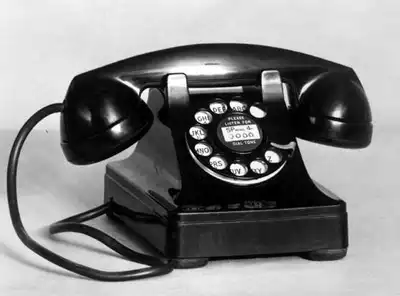
Virginia Lubowiecki, daughter of Kinga Strauss, who was born in 1923 in New Hyde Park, New York, said that her brother Chester was always on the phone. It was likely a model 302, forcing Chester to be close to the instrument.
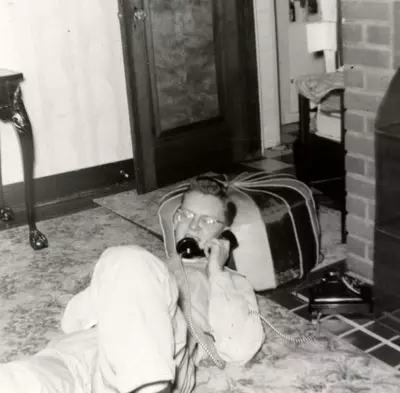
Virginia recalls always having electric power in her home, but they didn't have telephone service until about 1940, even though it was available years earlier.
Hempstead Plains
At the turn of the century (the early 1900s), the central part of Nassau County was a largely undeveloped area. It was mostly a treeless, flat land considered to be a prairie—the only natural prairie east of the Allegheny Mountains, as this photo from 1902 shows.
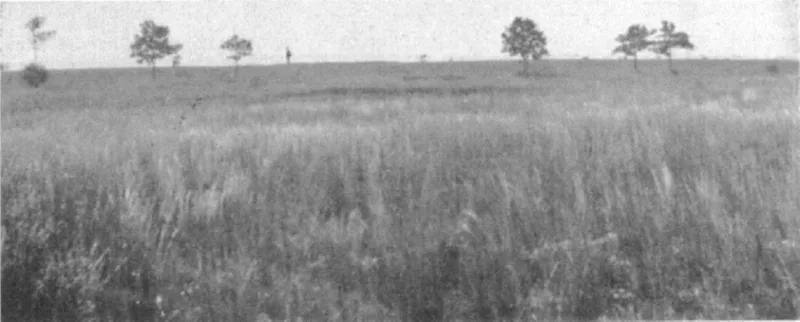
Credit: Harper
It was known as the Hempstead Plains. Its boundary was approximately today's Route 25 (named Jericho Turnpike for most of its length) to the north, Hempstead Turnpike to the south, the Nassau/Queens border to the west, and Route 110 to the east.
Mineola Fair
In 1905, the Hempstead Plains was the site of the Mineola Fair. The fairgrounds had Washington Street to the east, Old Country Road to the north, and 11th Street to the south. It's western boundary was between Franklin Avenue and what is now County Seat Drive.
The fair drew huge crowds. Our Strauss family ancestors likely attended.
Since Long Island had little industry at the time and was mostly an agricultural area, the Fair focused on agriculture. The Floral Hall was the centerpiece of the Fair's celebration of the Island's agriculture.
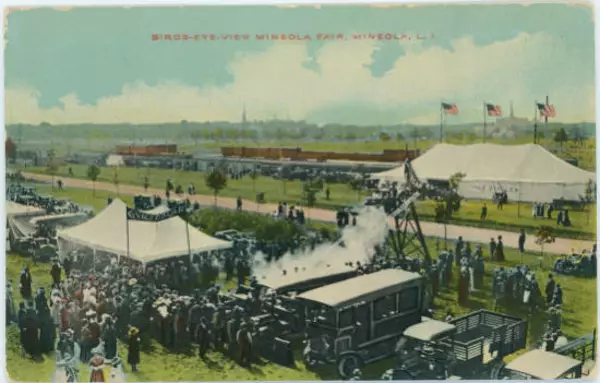
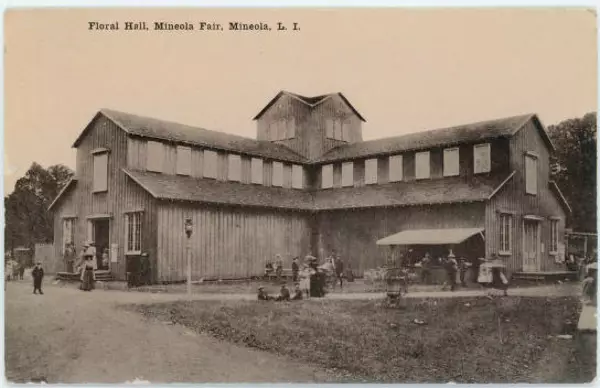
A race track and grandstand was built on the Mineola Fair Grounds. Note that this is not the racetrack that became Roosevelt Raceway.
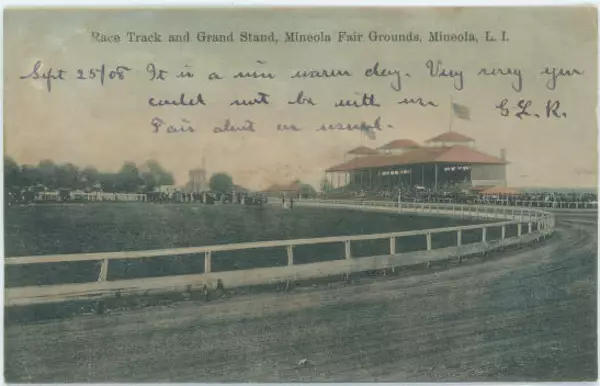
Roosevelt Raceway
The Roosevelt Raceway, built in the 1930s, occupies the eastern portion of what was the Hempstead Plains Aerodrome.
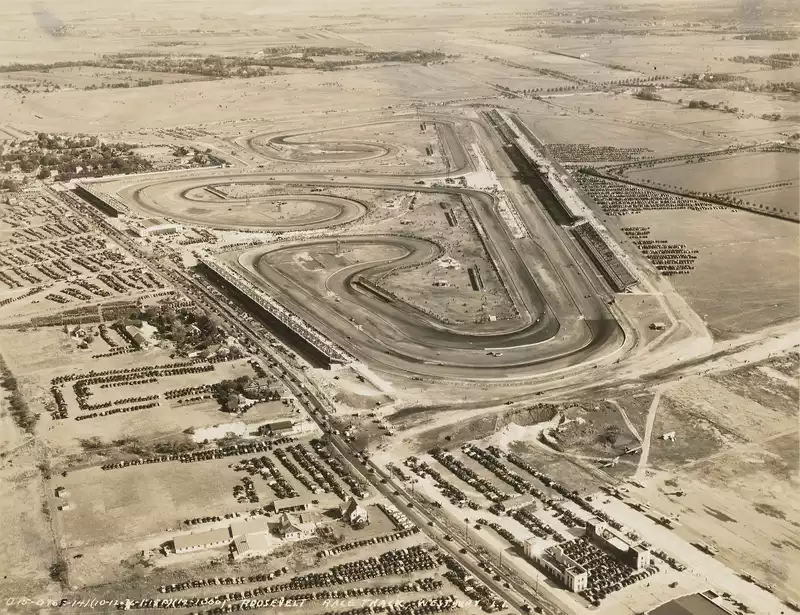
Salisbury Plains
A portion of Hempstead Plains was known as Salisbury Plains because it reminded some Long Islanders of the namesake in England, where Stonehenge is located. We haven't yet found a map or other information that defines the boundary of the plain, but generally it was the area in which Eisenhower Park (formerly Salisbury Park) resides.
Bus companies
The Hempstead Bus Company was located on the Mineola Fair Grounds, in the years after the fair ended. The company was founded by president Russel L. Baukney and Harry Bickmeyer in 1925. It was the largest of the companies operarting in Nassau County.
Leon Lubowiecki worked there. Harry Bickmeter considered Leon his troubleshooter. When there was a tough problem, Harry would ask Leon to fix it. Virginia tells a story of Harry calling Leon at night to come in to clear an accident that occurred at the entrance to their terminal so it could reopen.
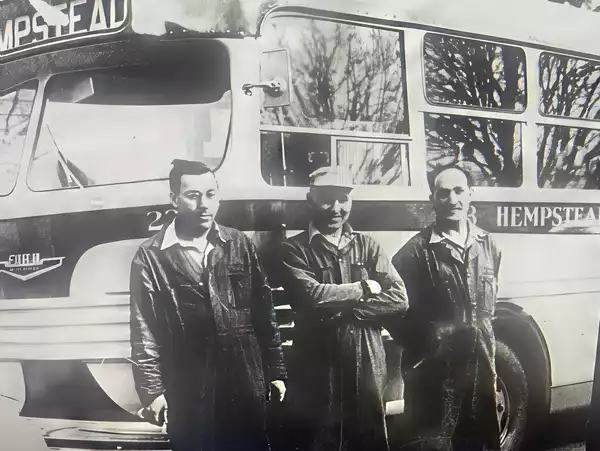
Russel Baukney died on May 16, 1954. Harry Bickmeyer died on November 15, 1973. The company ended its operation after Bickmeyer's death.